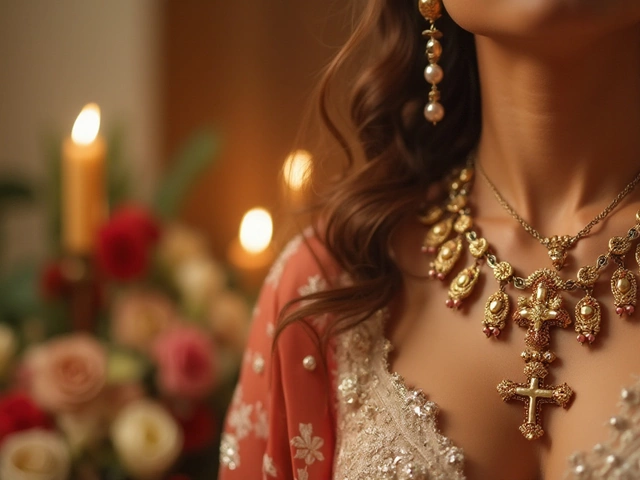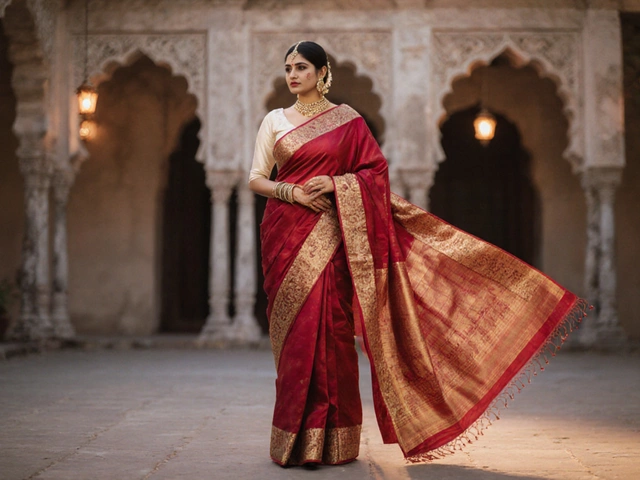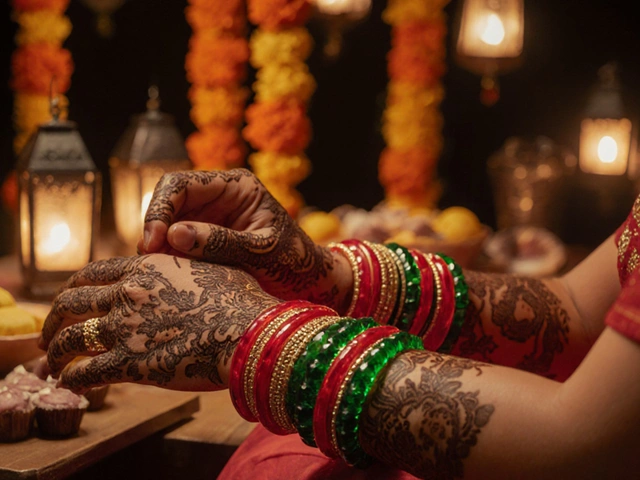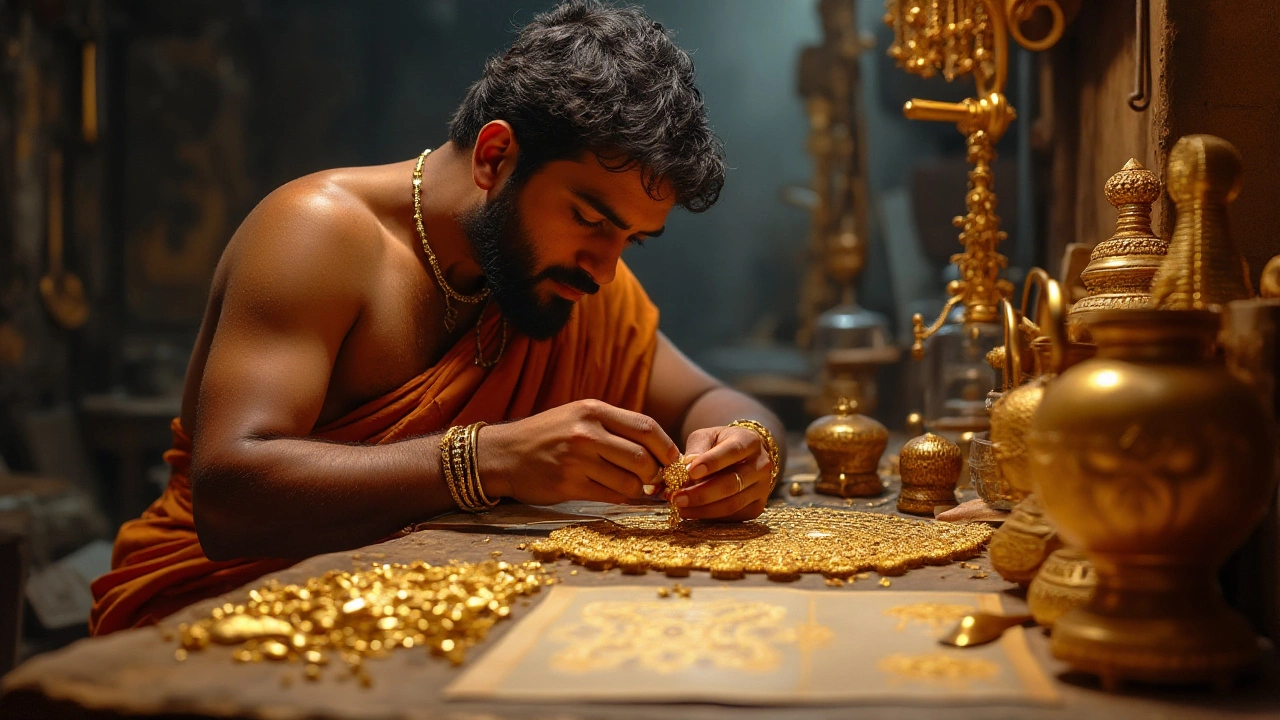
Diving into the captivating world of temple jewellery in India, one quickly finds that gold is not just a metal—it's a vibrant thread woven into the culture and spiritual landscape. With its heavenly gleam and regal allure, gold has been cherished not only as an adornment but also as a sacred offering and a symbol of prosperity.
Choosing the right type of gold for temple jewellery involves understanding both its quality and its cultural significance. Different carats and gold alloys play a vital role in accentuating the rich details that are emblematic of these treasured ornaments. From elaborate necklaces to intricate earrings, each piece tells a tale of tradition and artistry that has been passed through generations.
In this exploration, we'll delve into what makes each type of gold distinct and provide helpful tips on selecting the gold that best suits your needs, whether you're drawn by the art or the value it represents. Join us as we unravel the essence of gold within India's timeless temple jewellery craft.
- Understanding Gold Carats
- Popular Gold Types in Temple Jewellery
- Cultural Significance of Gold in India
- Tips for Choosing the Right Gold
Understanding Gold Carats
Gold carats are a hallmark of the jewelry world, especially in the intricate and revered realm of temple jewellery in India. A basic understanding of gold carats introduces us to the measurement of gold’s purity and its transformation into various uses, including the spellbinding designs found in Indian heritage ornaments. A carat simply represents how much gold is present out of 24 parts. When one talks about 24-carat gold, it means pure gold without any other metals mixed with it. Pure gold, however, is quite soft and malleable, which makes it unsuitable for crafting detailed jewelry without mixing it with other metals to enhance its strength. Therefore, other common carat ratings such as 22-carat and 18-carat are often used in jewelry craftsmanship, providing a balance between durability and maintaining the beauty of pure gold’s luster.
In the rich tradition of Indian temple jewellery, 22-carat gold has long been cherished, symbolizing a blend of substantive purity with enough hardness to sculpt fine details. This combination enhances the allure of the jewelry that donates to gods, and decorates deities in temples across India. On the other hand, 18-carat gold accommodates a greater infusion of other metals like silver, copper, or nickel, which imparts unique flexibility in designs, often lending to contemporary styles with a touch of revered traditions. If you find yourself in a jewelry market, it's imperative to ask the artisan or vendor about the proportion of gold to other metals for a deeper appreciation of your prospective treasured piece. According to the Gemological Institute of America, or GIA, many buyers prioritize the specific hue and strength that lower carats can convey, tailoring each purchase to their aesthetic and spiritual needs.
Gold carats also intertwine with regional and personal preferences. In parts of Southern India, where historical artistry flourishes, the high sheen of 22-carat gold is a common choice for ceremonial and bridal Indian jewelry, woven with traditions that speak to the soul. As you travel towards Northern regions, you may encounter preferences for heavier, adorned 24-carat gold, underpinning ancient ties to opulence and status. Even in rural settings, gold is synonymous with wealth, security, and a rightful heirloom that transcends generations. Keeping an eye on varying market prices and regional favorites can further enlighten your journey through selecting the right carat for your temple jewelry, straddling both traditional values and modern economics.
Adventurous seekers often combine the artistic potential of carat variations with mixed-metal palettes, allowing for outstanding customization of temple jewellery. A deeper exploration might guide you to consider the durability requirements based on your typical wear, whether it's an ornate piece for festivities or an everyday adornment that charms subtly. Whichever path you choose, know that each carat signifies its tale and serves as a testament to India’s awe-inspiring amalgamation of art and heritage. Whether you connect most with historical allure or modern-day vibrancy, gold’s enduring legacy in temple jewelry remains unquestionably captivating. And as Maurice Metayer once eloquently stated in his musings on precious metals,
"Gold is a tribute to our past and a promise to our future."
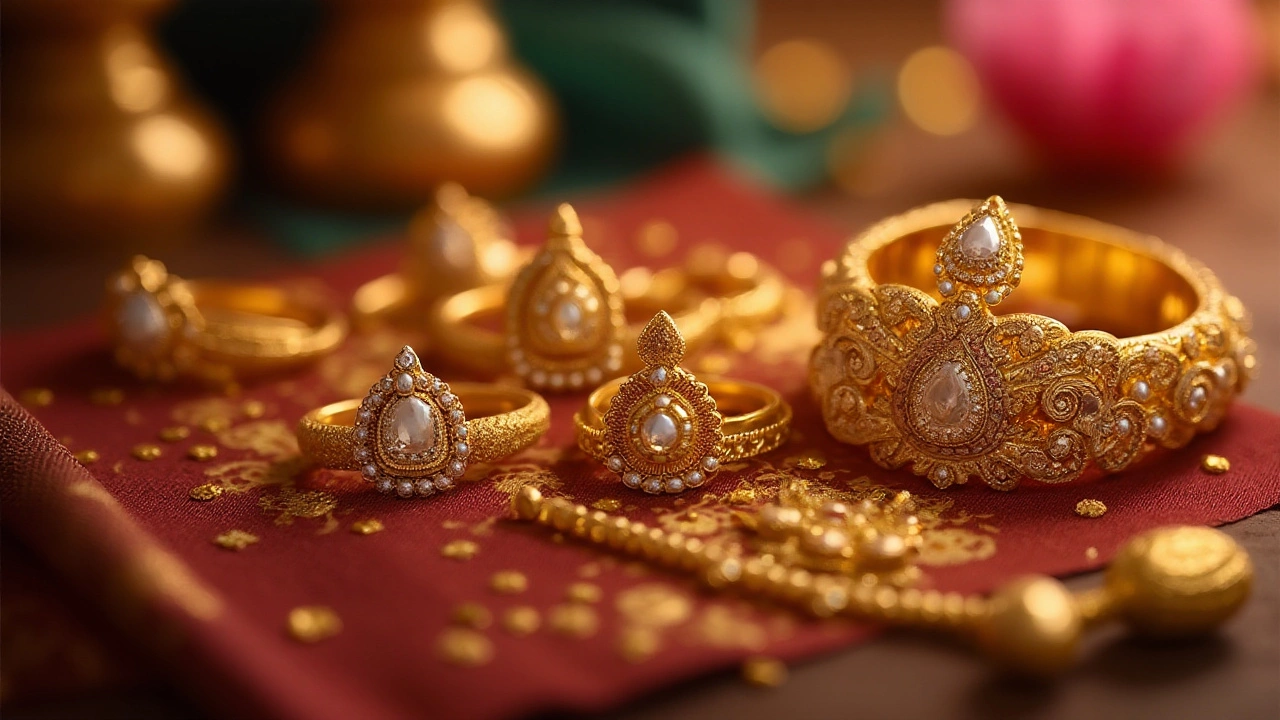
Popular Gold Types in Temple Jewellery
Temple jewellery, steeped in history and culture, primarily features gold that is selected for its purity and distinctive sheen. In India, where gold has transcended from a mere metal to a metaphor for beauty and divinity, its types are chosen with care and precision. The most common and revered types include 22-karat gold, known for its traditional brilliance, and 18-karat gold, appreciated for durability. The choice between these often depends on the balance between the artistic intricacies achievable and the gold’s robustness. Notably, 22-karat gold's near-pure nature allows for the creation of exquisite designs, deeply etched with spiritual motifs. At times, 18-karat gold can be opted for sturdier pieces where tensile strength outweighs the requirement for purity.
When talking about the types of gold used in temple jewellery, another consideration is the aesthetic appeal provided by mixing gold with other alloys. These mixtures not only enhance durability but also bring about unique colors, which can be pivotal in highlighting certain design features. For instance, a slight hint of copper in the alloy gives rose gold its characteristic blush, which is sometimes used to add warmth to certain pieces. An often-quoted appreciation of India's gold craftsmanship by the Gemological Institute of America noted that "The subtle hues in India's gold jewellery complement the diverse skin tones found across the country, enhancing the wearer’s natural beauty."
Occasionally, temple jewellery artisans employ 24-karat gold, known for its absolute purity. However, its application is generally limited due to its softness, which can be unsuitable for elaborate pieces. Yet, its use in certain inlay work or plating certain elements can lend a godly aesthetic, resonating well with the spiritual overtones of temple jewellery. It is also interesting to note that in particular regions, traditional temple jewellery might include elements wrought from "Kundan," a method of gold foil application onto delicate stone settings, furthering gold’s mystical allure. This method is a testament to India's rich heritage in crafting jewellery that is as much about emotion as it is about elegance.
Modern trends also see the occasional inclusion of white gold, which is traditionally less common in temple jewellery, to offer a contrast to the lush yellow. While not as typical, this incorporation speaks to a blend of age-old traditions with contemporary tastes. It provides flexibility to those willing to experiment while still paying homage to the classical styles. Notably, more affluent settings may include pieces crafted from hammered or textured gold, techniques that offer a visually captivating aspect to these sacred adornments. What's key is that each type of gold used in these creations is chosen not just for its physical attributes but for the story it helps to tell.
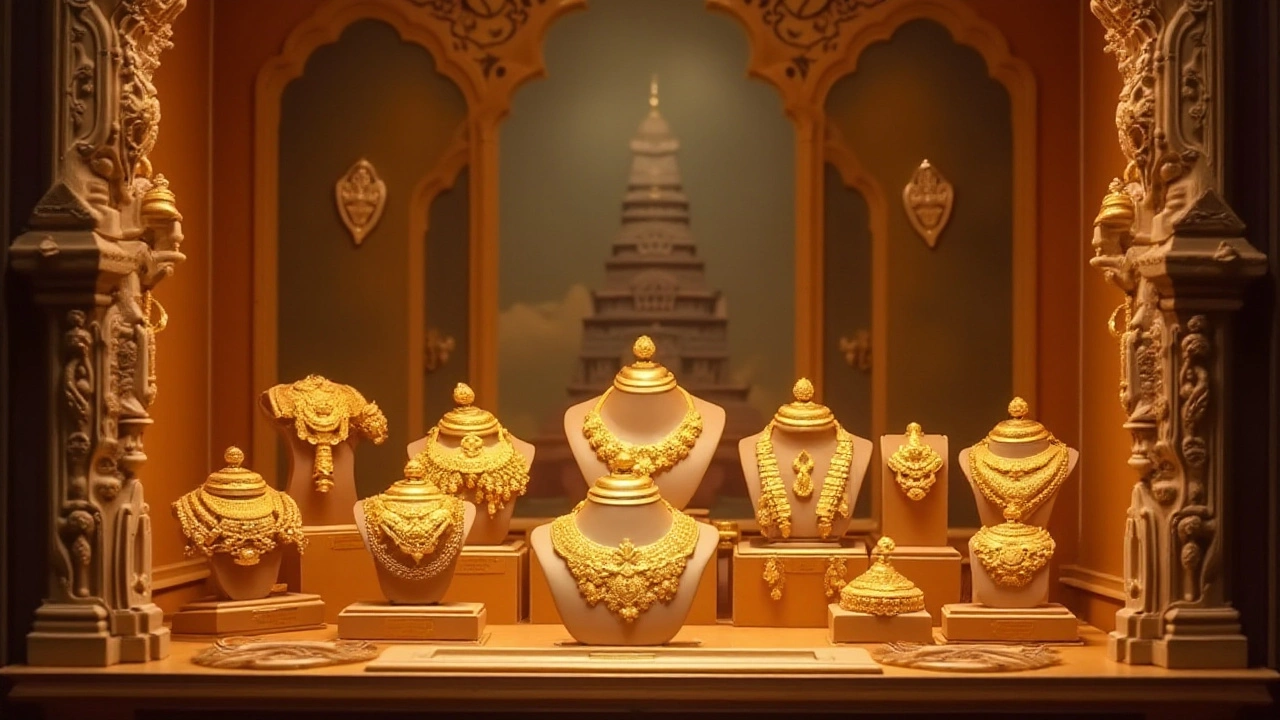
Cultural Significance of Gold in India
Gold in India is far more than just a shiny possession; it is a profound symbol entrenched within the heart of Indian culture and spirituality. For centuries, temple jewellery made from different gold types has played a critical role, reflecting India's deep-seated reverence for gold. Not only does it represent wealth and opulence, but it is also seen as an embodiment of divine energy. The relationship between Indians and gold is complex and deeply rooted, with historical texts and scriptures often highlighting its importance as both a physical and spiritual asset. From mythological tales to historical events, gold has always figured prominently, crafting a narrative that is as rich as the metal itself.
In traditional Indian families, acquiring gold is associated with good fortune and sanctity. Rituals such as weddings, births, and festivals often see gold being exchanged as a token of love and prosperity. The tradition of giving gold jewellery during auspicious occasions is an age-old practice, said to invite Goddess Lakshmi, the deity of wealth and abundance, into one's home. In many communities, it is believed that owning gold ensures a buffer against financial hardships, creating a sense of security that transcends generations. This spiritual connection to gold is tenderly captured in the intricate designs and motifs of Indian temple jewellery.
Gold's cultural prominence is also evident in India's religious architecture. Temples dedicated to various deities, such as the revered Tirupati Balaji Temple, are adorned with vast quantities of gold donated by devotees. Priests use gold in rituals to symbolize immortality and purity, ingraining it deeply in religious and cultural practices. According to the World Gold Council, about 30% of India's gold demand is related to religious and cultural purposes.
As noted by Dr. Anil Gupta, an esteemed cultural historian, "Gold in India is not merely a metal but a shining medium through which people connect with their deities, ancestors, and the sublime aspects of their lives."
- The intricate artistry of temple ornaments often includes motifs of gods and goddesses, floral patterns, and mythical creatures, emphasizing its religious and cultural connotations.
- Each piece tells a story, connecting the owner to a broader narrative of history and myth.
- This artisanal heritage not only highlights craftsmanship but also showcases the spiritual journey of many generations.
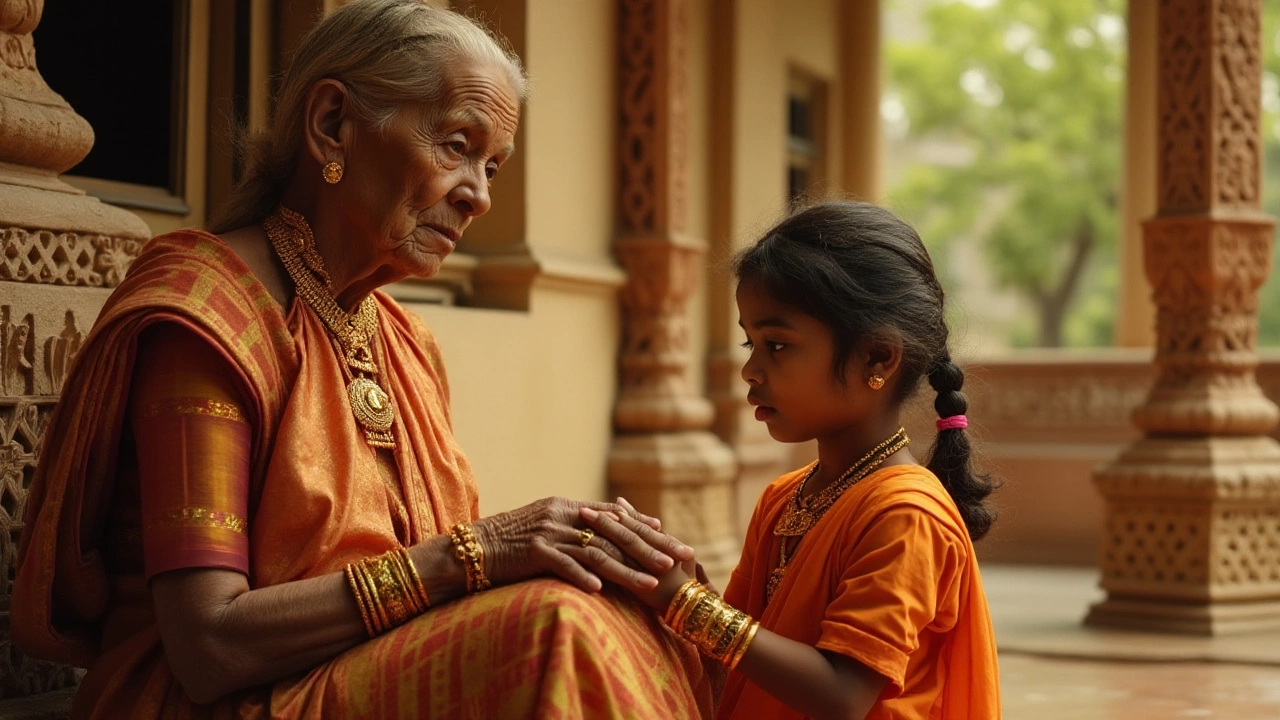
Tips for Choosing the Right Gold
When choosing the right type of gold for temple jewellery, it’s essential to consider not just the aesthetic appeal, but also the quality and cultural significance of the metal. First, understand the gold types available, primarily classified by their purity, measured in carats. The purest form is 24-carat gold, but it's too soft for crafting intricate designs. Instead, 22-carat gold is often preferred for Indian jewelry, balancing purity and durability. It's a blend of 91.67% gold with a small amount of other metals like copper or silver, making it sturdy enough to hold detailed engravings without compromising the rich, yellow hue that’s synonymous with prosperity.
Speaking of design, the alloy composition plays a crucial role in the crafting process. Mixing gold with base metals like copper not only strengthens the metal but influences its color. Slight variations can result in fascinating hues ranging from warm yellow to red, allowing artisans to create vibrant temple jewellery. A seasoned buyer will consult with the jeweler on the specific requirements of a design, ensuring the color and karat size align with the traditional or contemporary style of the piece.
Indian jewelry is often adorned with stones, and the gold setting must provide secure mountings. When evaluating the craftsmanship, observe how well the gold encases and holds gemstones. Jewelers may advise higher carat gold for pieces that prioritize show over wearability or use gold plating techniques to maintain shape without sacrificing luxury. For investment purposes, however, go for high-purity gold, especially in heirloom pieces intended to be passed through generations.
It's also prudent to consider the cultural and personal significance of gold types. Certain communities prefer specific karat choices due to longstanding traditions. For instance, some South Indian weddings display primarily 22-carat gold ornaments, while others may focus on intricacies which lower karat pieces support better. A thoughtful buyer recognizes not only the monetary value but appreciates the historical layers and social sentiments interwoven in the choice of gold.
As the renowned jeweler, L. Bhudy commented, "Choosing the right gold is akin to choosing the right words for a love letter; it conveys deep meaning and emotion that transcends mere appearance."
Remember, in the context of temple jewellery, the gold is more than material—it is symbolic of divinity and wealth. Finally, validate the quality with appropriate hallmarks that certify the gold's authenticity. This involves ensuring the piece has been tested and marked by reputable agencies, which guarantees the karat level and the artisanship meets set standards. By focusing on these aspects, you can select gold that not only enhances the intricate beauty of temple jewellery but also upholds its spiritual essence and legacy.

